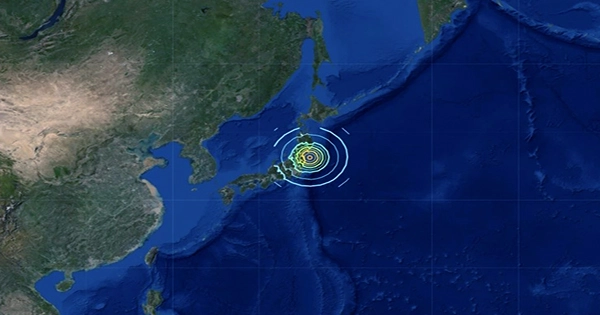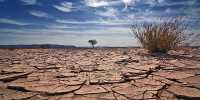An earthquake off the coast of Fukushima, Japan, has prompted worries that a tsunami is on its way. Following a 7.3-magnitude earthquake in northern Miyagi prefecture at roughly 11:36 p.m. local time on March 16, the Japan Meteorological Agency has issued a tsunami warning for coastal areas across the country. Later today, they are due to hold a news conference about the earthquake and tsunami threat.
According to ABC News, the agency has warned that the quake might result in a 1 meter (3 foot) sea-level rise in Miyagi and Fukushima prefectures, and that the tsunami may have already reached certain locations. As the crisis unfolds, fighter airplanes have been dispatched to evaluate any damage and gather intelligence.
According to Bloomberg, the 7.3-magnitude earthquake struck 60 kilometers (36 miles) beneath the sea and knocked out electricity in nearly two million residences throughout Tokyo. Tokyo Electric Power Company Holdings is allegedly inspecting the Fukushima Daiichi nuclear reactor for damage after the cooling systems failed due to an earthquake in 2011.
While emergency services attempt to determine the extent of the damage, Prime Minister Fumio Kishida issued a warning to Japanese citizens, urging them to prioritize saving lives and keeping a watch on the Prime Minister’s Office’s official Twitter account for updates.
The Fukushima Daiichi nuclear accident, which occurred ten years ago today, was the worst nuclear disaster since the 1986 Chernobyl disaster. The Fukushima Daiichi nuclear power station was badly damaged during a devastating magnitude 9.0 earthquake and ensuing tsunami, resulting in a cloud of radioactive smoke seeping into the sky and surrounding communities. To this day, the facility continues to leak.
Over 100,000 people were forced to flee their homes as a result of the poisoning, and 2,313 individuals died as a result of the tragedy. If it hadn’t been for the hundreds of firemen, contractors, and military people who hurried to the scene to restore reactor cooling, the figure would have been considerably higher.
The Fukushima Daiichi nuclear power plant is a massive facility with six reactor units that are part of a bigger plant with many more. With six boiling water reactors producing a combined 4.69 GW of power, the station was one of the world’s 15 biggest nuclear facilities when it was commissioned in 1971.
Despite its magnitude, the Fukushima nuclear power facility was deemed to be in serious danger of failing. The reactors were built on Japan’s East Coast in a seismically active zone, with earthquakes occurring often. Furthermore, media reports suggest that TEPCO, the reactor’s operator, was previously informed that the plant’s seawalls were insufficient to protect it from a large tsunami, but that the warnings were disregarded.













